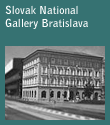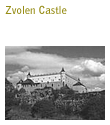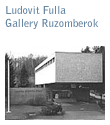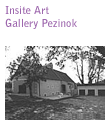
 |
 |
 |
 |
 |
|



2010
2009
| PRESS RELEASE - MUDROCH & MUDROCH The Dialogue That Never Took Place 17. September 2009 |
|
Juraj Bartoš / Press Release 1. October 2009 Juraj Bartoš Exhibition Curator: Aurel Hrabušický 1 October – 22 November 2009 SNG Esterházy Palace, Námestie Ľ. Štúra 4, Bratislava Daily 10 a.m. – 5.30 p.m. Juraj Bartoš (* 1944, Bratislava) grew up in a culturally developed family environment. His older brother, Peter, is one of the pioneers of conceptual art in Slovakia and his younger sister, Zuzana, is a well known art historian and collector. Juraj completed his studies at the photographic department at the School of Arts and Crafts in Bratislava (1965). He started out as a photojournalist and later he occasionally found work in various sectors of applied photography. He had no ambitions of becoming an art photographer. Although photography was his living, he never applied for membership in the photographic section of the official Union of Fine Artists. For one thing, it would have meant participating in the co-creation of the official culture and as an existential documentary maker he refused to do this. Juraj Bartoš was always more interested in photographing people in the entire breadth of their manifestations rather than in art concepts. He does not understand taking photos as self-expression; so called art photography, even of the reportage type, is existentially distant from him. He is reminiscent of Bauhaus photographers who merely wanted to be “clicking documentary makers” (knipsende Dokumentierer). He recently expressed the regret that photography had not been invented several centuries earlier: “Because it would be interesting to have photographic documents from the Renaissance or Baroque periods”. He most appreciates those figures who created large cycles of photographic documents, especially August Sander and his grandiose never completed project, 20th Century People. In the preface of Sander’s book of photographs, Anlitz der Zeit (1929) the writer Alfred Döblin stated, “he writes sociology without writing it”. He could have said the same about Juraj Bartoš – it pertains to him more than any other Slovak photographer. Photography for him is a form designed for recording the socially anchored human presence – direct, physical but also indirect, intermediated by signs and mutual references which carry a certain sense, a message, designed for those “not yet born”. For Juraj Bartoš, the capturing of these messages is more important than his own individual photographic expression. Some time ago, it was said that “it is difficult to distinguish any aesthetics or special style” in his work. Bartoš’s way of taking photographs caused a certain embarrassment among experts who prevented his full acceptance. Only recently has the ice been broken. Now his photographs are publicized and exhibited more frequently. It seems that society also reached certain level of maturity – people now understand that through Bartoš’s photographs they will learn more about themselves and that the issues of style are not essential in this respect. Nevertheless, we can’t talk about Bartoš’s style, we can only mention certain peculiarities of his photographic method. The fact that he prefers to photograph in public spaces arises from his interest in the complexity of human manifestations; he rarely creates interior documentary shots. Probably he finds more opportunities in the broad sample of people to document “street fashion” on one hand and the fleeting transitional states of people which can be captured only thanks to anonymity in the middle of crowd. People are less self conscious when the lens of the camera is not directly aimed at them. In public, they feel more protected against someone touching the image of their personality, the picture of their soul that they have spent a long time to create. That is why, within the framework of his approach, the photographer sometimes directly calls to them to get them to open up just a little, to come out of themselves. As a result, Bartoš’s immediate portraits of “individuals among the crowd” arise. However he is even more interested in traces of human presence, their indirect manifestation. He has extreme sensitivity towards visualizing text, the unintended legacy contained in various text messages. Several Slovak photographers manifested a sense for the irony of text messages in social communication in the course of the 1970s and 1980s, but none of them worked on this as consistently as he did. Although he is not a conceptualist like his brother, it is clear that he belongs to the Slovak generation who, through conceptual thinking, opened new possibilities for art as such. But all that is overshadowed by his endless fascination with various signs of the human presence. Photographic projects, like Sander’s or Bartoš’s, can never be complete. Like a famous figure in Czechoslovak history, at the end of his efforts he could also say: “People, I liked you!” But he would say it with an amused smile. up |
|


© 2005 Slovak National Gallery. All Rights Reserved. Web satori.






























